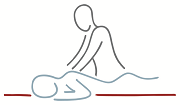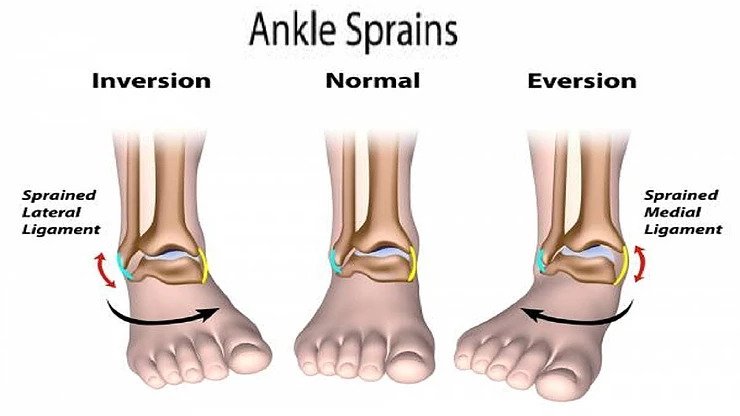Ligaments are a connective tissue made from collagen fibres and they attach bone to bone at joints. Ligaments help to stabilise the joint and can become damaged if the joint is forced beyond its’ usual range of motion. An example of a commonly damaged ligament is the Anterior Cruciate Ligament of the knee. Sprains of this ligament occur most frequently in sports involving pivoting . e.g. football, basketball, netball, downhill skiing. Other common areas of injury are the ankles and wrists (from falls). Ligament sprains are more common in females which may be connected to our hormones. Risk of sprains is increased by muscle fatigue, poor form, sudden increase in training and insufficient warm-up. Previous injury also increases the risk of future problems so return to training should be well managed.
Sprains are classified at three grades or levels:
Grade 1 –
Some stretched fibres but a normal range of movement at the joint. There will be some heat, swelling and pain as the blood vessels in the ligament are broken along with the collagen fibres. Initial treatment should follow the P.R.I.C.E. protocol followed by optimal loading through remedial exercise and Soft tissue therapy. Grade 1 sprains take 2 to 3 weeks to heal.
Grade 2 –
A tear to part of the ligament which can vary from less than a third to almost all the fibres. In these cases, there will be an increase in heat, bruising, pain and swelling as more damage has been done. There will also be laxity in the joint as the ligament is unable to provide the usual stability and support. There may be some difficulty in load bearing and function of the joint depending on the severity of the tear. The P.R.I.C.E protocol should again be followed, but recovery will be slower and the rest period will be longer before therapy and optimal loading can begin. Grade 2 sprains can take between 4 and 8 weeks to heal completely.
Grade 3 –
A complete rupture of the ligament is classed as Grade 3. In these cases, a popping sound may be heard as the ligament breaks. Pain may be absent as the pain receptors in the tissue will be ruptured and damaged. Adjoining tissues may also be damaged as the cause of the sprain will be a severe injury. There will be excessive joint laxity and no end point to the joint’s range of movement. These sprains may require surgery to reconstruct the ligament and a period of immobilisation of the joint. A rehabilitation program would be needed after this to return the client to a satisfactory range of motion in the joint. Grade 3 sprains can take several months to heal.
If you would like help with managing any minor injury, please get in touch.

